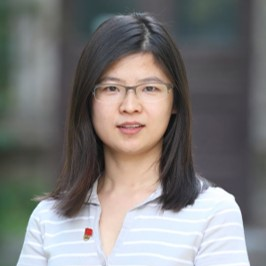Advance in Sustainable Construction and Building Materials (2nd Edition)
A special issue of Materials (ISSN 1996-1944). This special issue belongs to the section "Construction and Building Materials".
Deadline for manuscript submissions: 20 September 2024 | Viewed by 5879
Special Issue Editors
Interests: building materials; envelopes; porous materials; foamed ceramics; phase change materials; energy-saving; thermal properties; solid waste utilization
Special Issues, Collections and Topics in MDPI journals
Interests: concrete; cement; hydration; microstructure; durability; rheological properties; alkali-activated materials
Special Issues, Collections and Topics in MDPI journals
Special Issue Information
Dear Colleagues,
Human history is a history of continuous development of materials, in which construction and building materials are the main parts of human activity. Climate change and environmental pollution have driven people to find energy-saving, eco-friendly, cost-effective, and sustainable routes of material synthesis and application with the aim of resolving these problems, especially in the field of construction and building materials. Therefore, the aim of this Special Issue is to advance and disseminate knowledge in all the related areas of sustainable construction and building materials. This Special Issue provides essential information that will help improve efficiency, productivity, and competitiveness in world markets. It is therefore vital reading for all professionals and academics involved in research into, or specification of, building materials.
The sustainable construction and building materials and technology covered include cement, concrete reinforcement, bricks and mortars, additives, corrosion technology, ceramics, timber, steel, polymers, glass fibers, phase change materials, recycled materials, bamboo, non-conventional building materials, green building materials, new technology for the improvement of material designs, and other related fields. The scope of this Special Issue includes but is not restricted to construction products, bridges, high-rise buildings, dams, civil engineering structures, silos, highway pavements, tunnels, water containment structures, sewers, roofing, housing, and railways. Original articles with innovative ideas and methods across the whole scope and up-to-date review papers and case studies are welcomed in this Special Issue.
Dr. Ru Ji
Dr. Fanghui Han
Guest Editors
Manuscript Submission Information
Manuscripts should be submitted online at www.mdpi.com by registering and logging in to this website. Once you are registered, click here to go to the submission form. Manuscripts can be submitted until the deadline. All submissions that pass pre-check are peer-reviewed. Accepted papers will be published continuously in the journal (as soon as accepted) and will be listed together on the special issue website. Research articles, review articles as well as short communications are invited. For planned papers, a title and short abstract (about 100 words) can be sent to the Editorial Office for announcement on this website.
Submitted manuscripts should not have been published previously, nor be under consideration for publication elsewhere (except conference proceedings papers). All manuscripts are thoroughly refereed through a single-blind peer-review process. A guide for authors and other relevant information for submission of manuscripts is available on the Instructions for Authors page. Materials is an international peer-reviewed open access semimonthly journal published by MDPI.
Please visit the Instructions for Authors page before submitting a manuscript. The Article Processing Charge (APC) for publication in this open access journal is 2600 CHF (Swiss Francs). Submitted papers should be well formatted and use good English. Authors may use MDPI's English editing service prior to publication or during author revisions.







